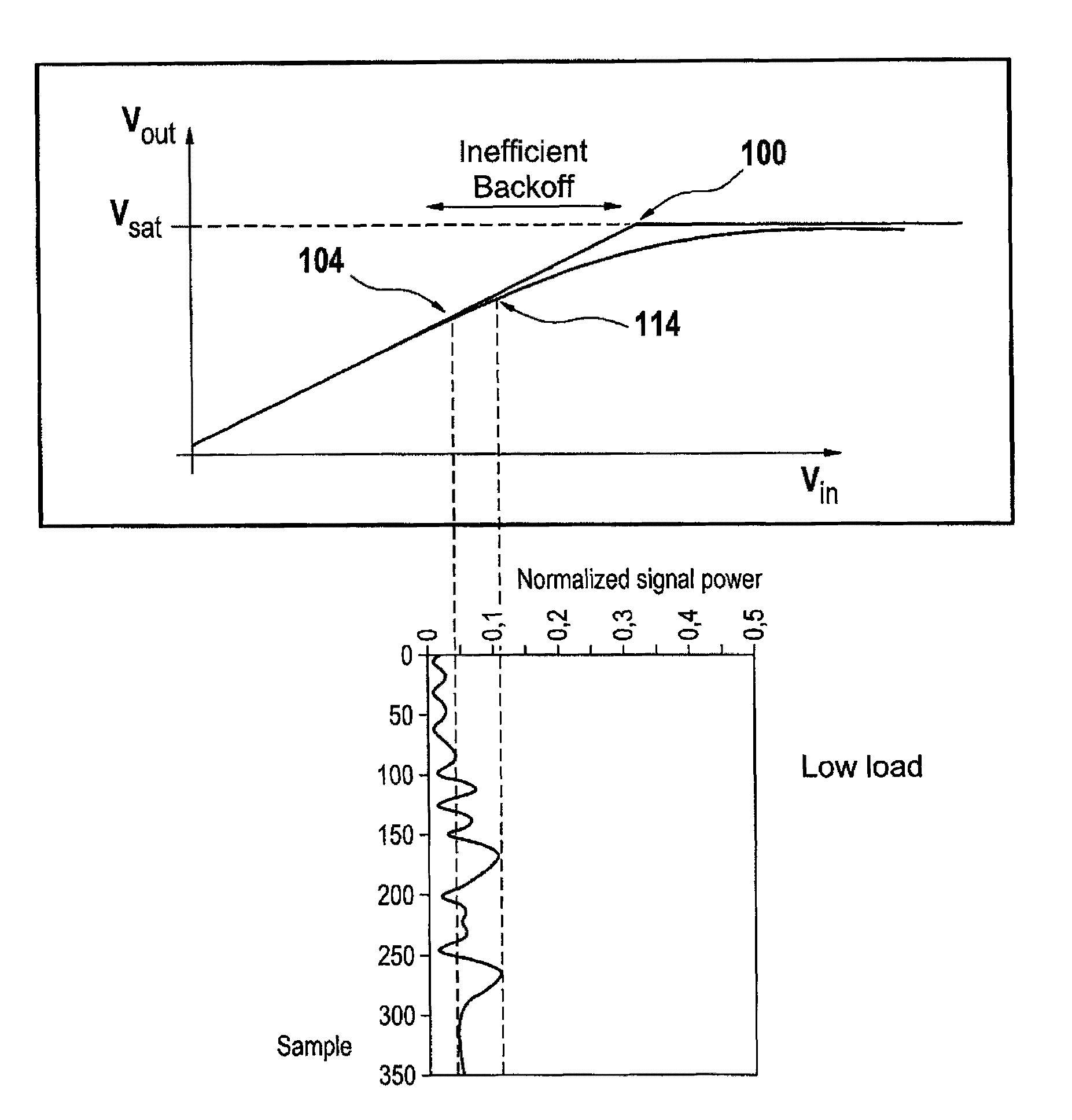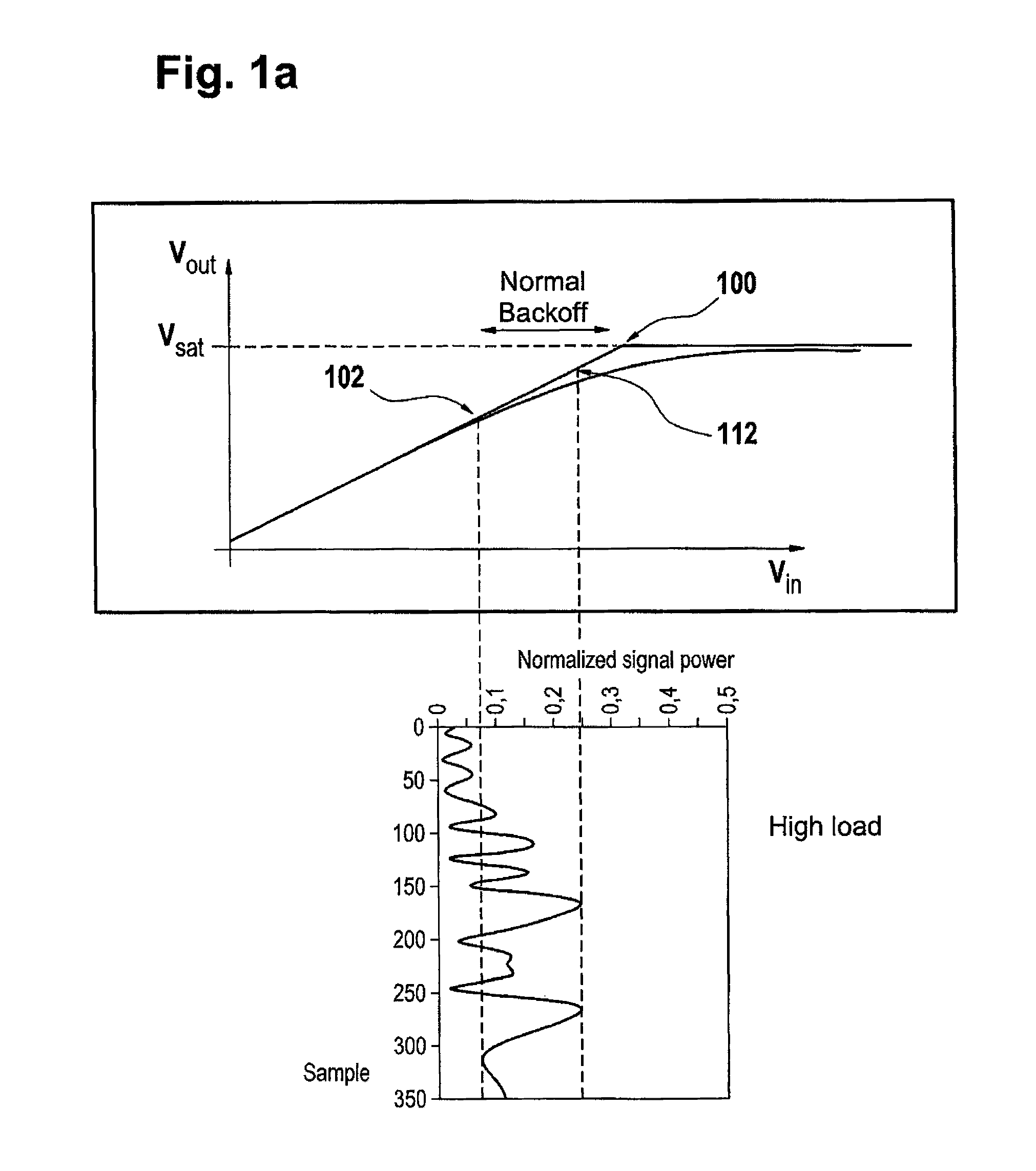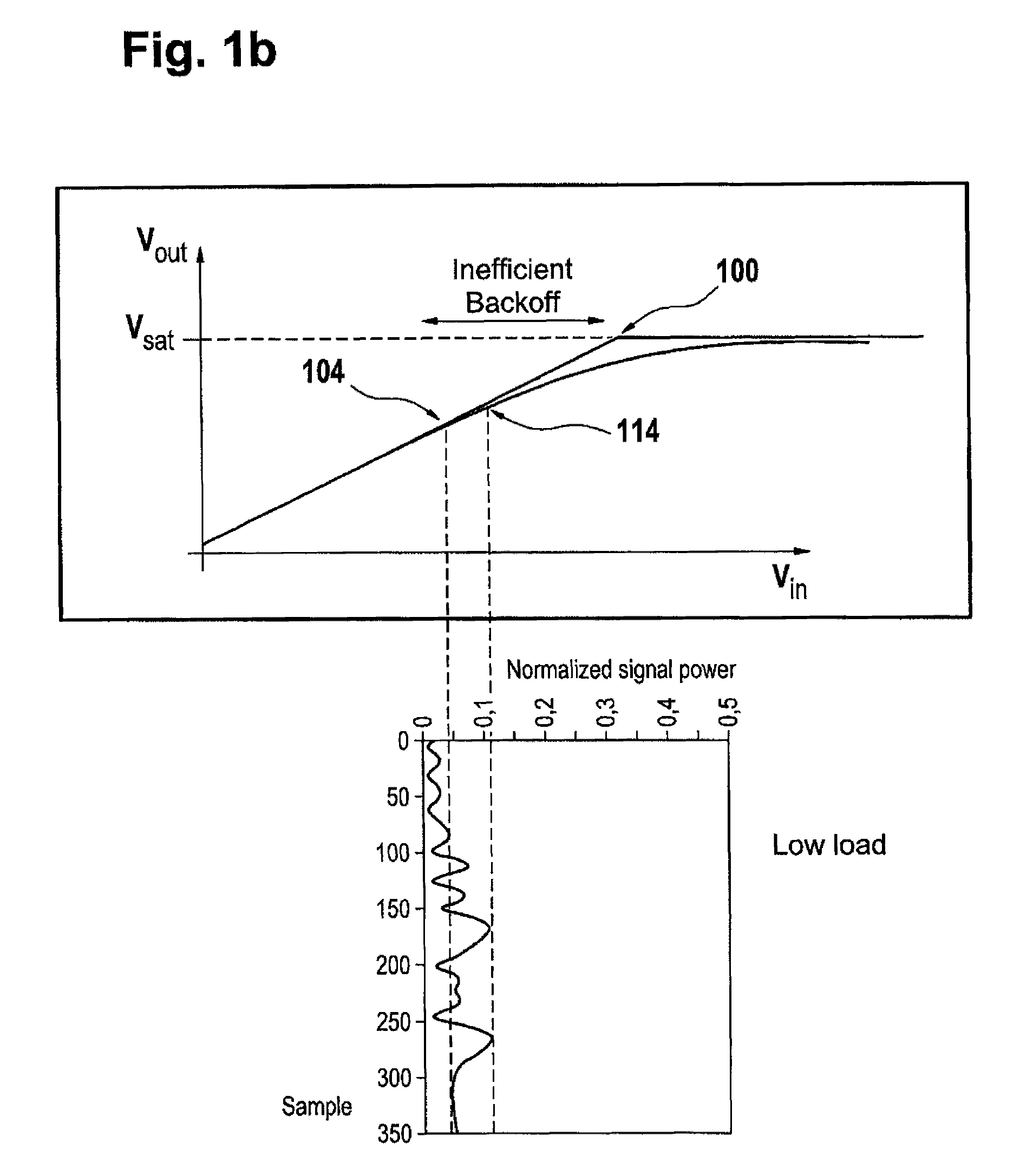Optimizing power consumption of a base station
a base station and power consumption technology, applied in the field of mobile telecommunications, can solve the problems of significantly lower power consumption, limited maximum used output load of amplifiers, inefficient operation of base stations, etc., and achieve the effect of improving the apparatus of base stations and improving computer-readable storage media
- Summary
- Abstract
- Description
- Claims
- Application Information
AI Technical Summary
Benefits of technology
Problems solved by technology
Method used
Image
Examples
Embodiment Construction
[0042]Like numbered elements in these Figs. are either identical elements or perform the same function. Elements which have been discussed previously will not necessarily be discussed in later Figs. if the function is identical.
[0043]FIG. 1 is a schematic view of characteristic curves of a base station amplifier. Each diagram consists of a characteristic curve and a corresponding traffic load diagram of the traffic load in the respective cell. FIG. 1a shows the characteristic curve for a state of the art amplifier in a cell with a relatively high traffic load. FIG. 1b illustrates the characteristic curve of the state of the art amplifier in a cell with a relatively low traffic load. The higher the traffic load the higher is the operation point of the amplifier. In other words, for higher traffic loads the operation point is located nearer to a saturation point 100 of the amplifier. FIG. 1a shows the characteristic curve of an amplifier and the operation point 102 in a cell with a re...
PUM
 Login to View More
Login to View More Abstract
Description
Claims
Application Information
 Login to View More
Login to View More - R&D
- Intellectual Property
- Life Sciences
- Materials
- Tech Scout
- Unparalleled Data Quality
- Higher Quality Content
- 60% Fewer Hallucinations
Browse by: Latest US Patents, China's latest patents, Technical Efficacy Thesaurus, Application Domain, Technology Topic, Popular Technical Reports.
© 2025 PatSnap. All rights reserved.Legal|Privacy policy|Modern Slavery Act Transparency Statement|Sitemap|About US| Contact US: help@patsnap.com



